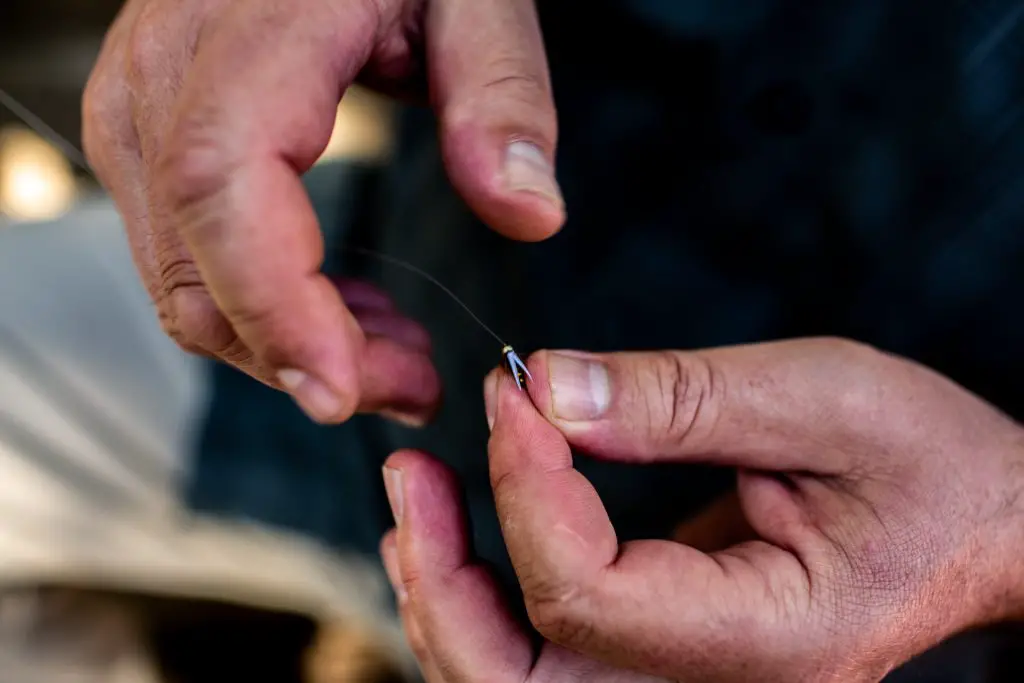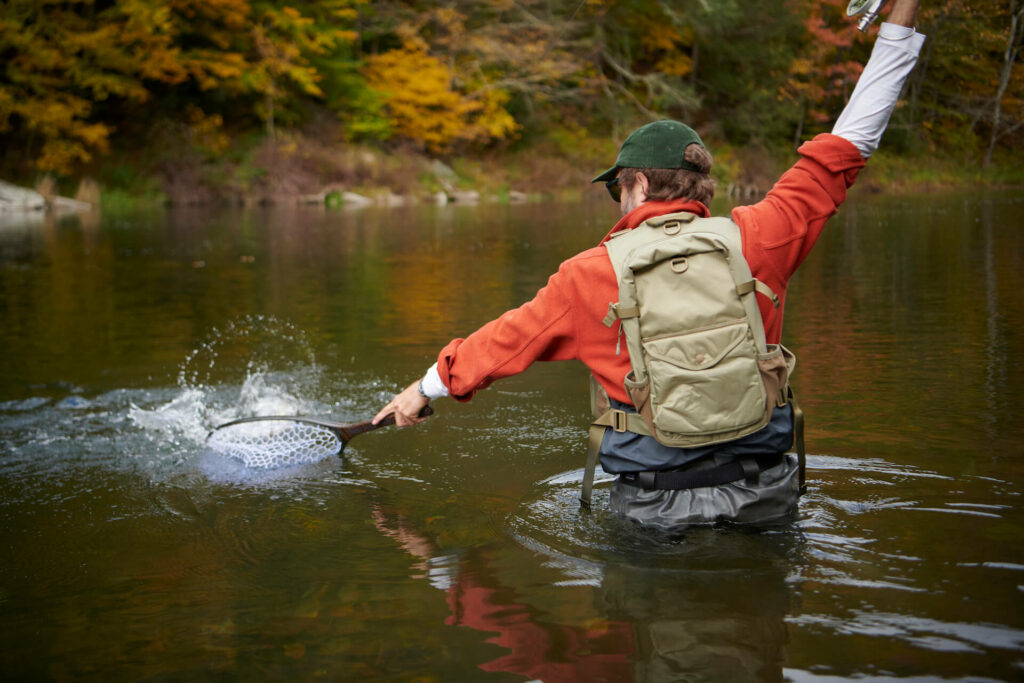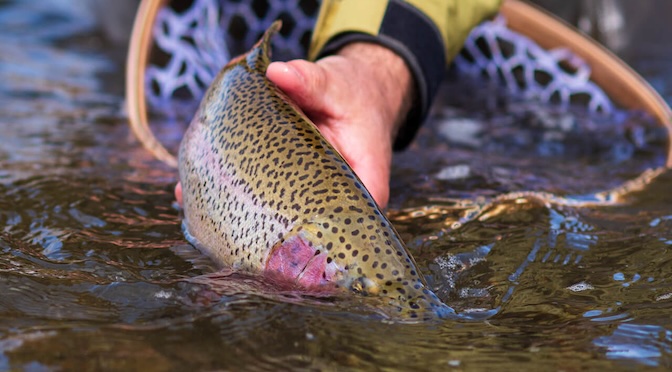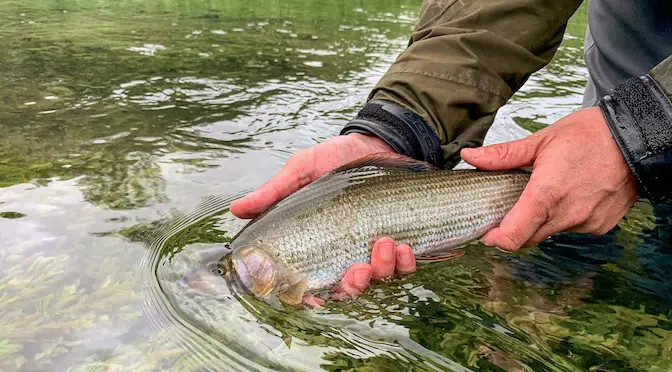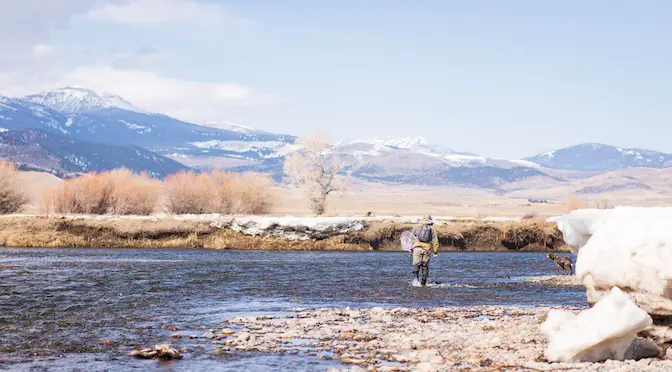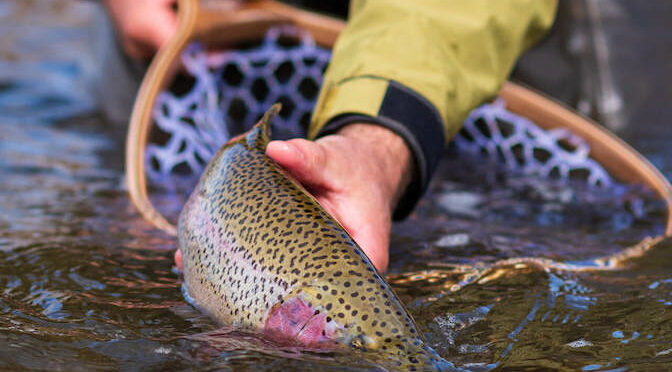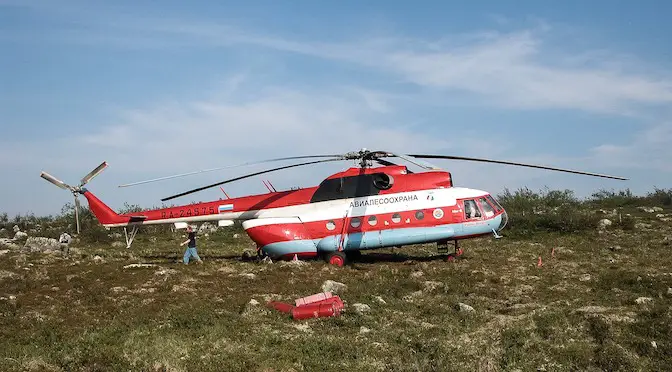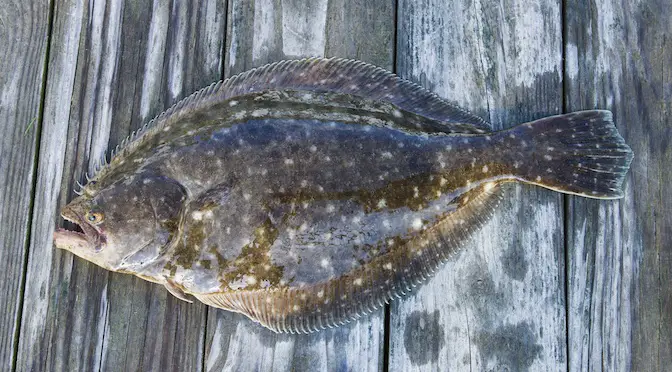- Wading Wisdom #13 – Simon Gawesworth - July 7, 2025
- On the Water with the Korkers Bantam Lite - June 26, 2025
- How to Find Trout in Rivers & Streams Anywhere - June 13, 2025
Fly fishing is a rewarding sport that connects you with nature in often tranquil and scenic settings.
However, for beginners, knowing what equipment is needed to get started can be daunting. This guide will walk you through the essential fly fishing gear, ensuring you’re well-prepared for your first foray into this fascinating activity.
Fly Fishing Rods
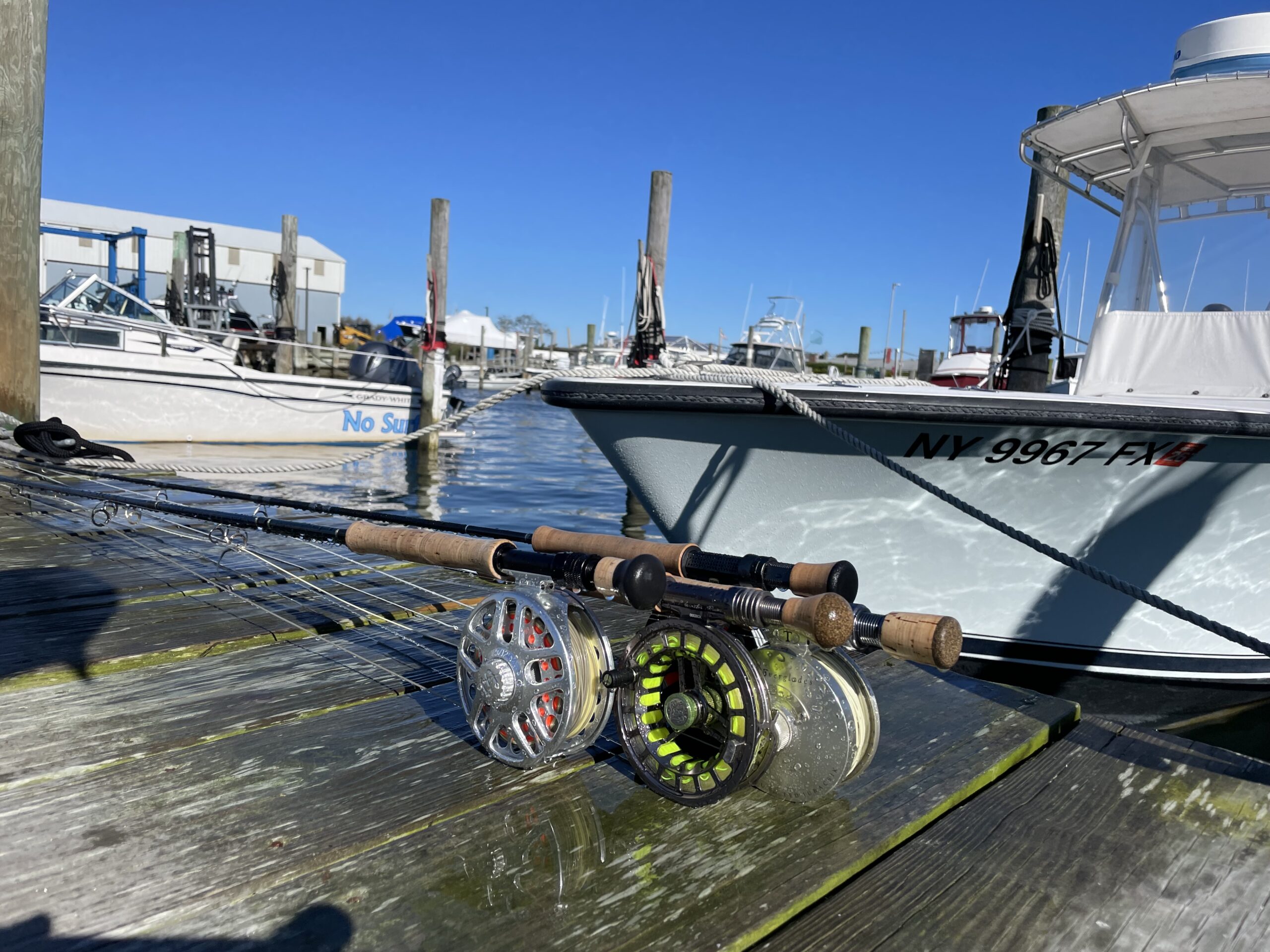
The rod is your primary tool in fly fishing, acting as an extension of your arm. When selecting a fly rod, consider its length, weight, and action:
Length: A good starter rod length is around 8 to 9 feet, which offers versatility for a variety of environments.
Weight: The weight of the rod should match the type of fish you’re targeting. A 4 to 6 weight rod is suitable for most freshwater fish like trout and small bass.
Action: Rods come in fast, medium, and slow actions, which determine how the rod flexes. Beginners should start with a medium action rod as it provides a good balance between power and ease of use.
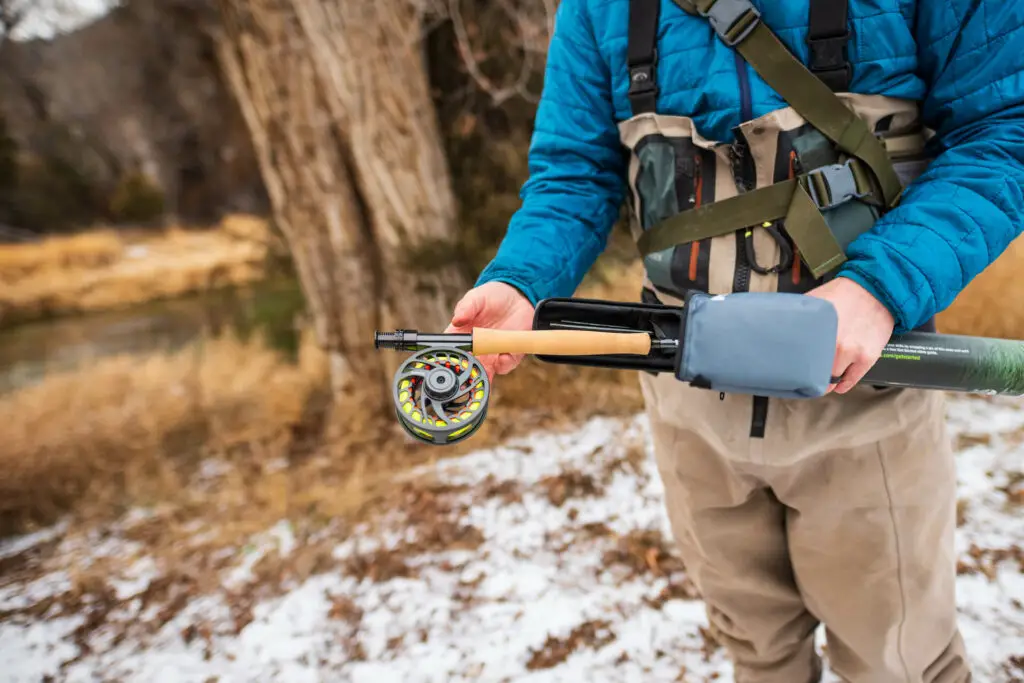
Fly Fishing Reels
The reel holds your line and helps in landing fish. For beginners, a simple, durable, and easy-to-maintain reel is essential. Look for a reel that matches the weight of your rod and line. A good beginner’s choice is a mid-arbor design that offers a balance between line capacity and retrieval speed. If you’re unsure whether a certain reel will work with a certain rod, I recommend taking a look at fly rod combos. These outfits most often include a rod, reel and line, put together by experts. Sometimes they even come with leaders and a few flies. What’s great about a fly rod combo is the fact that you can be sure that all pieces of the set will work together nicely.
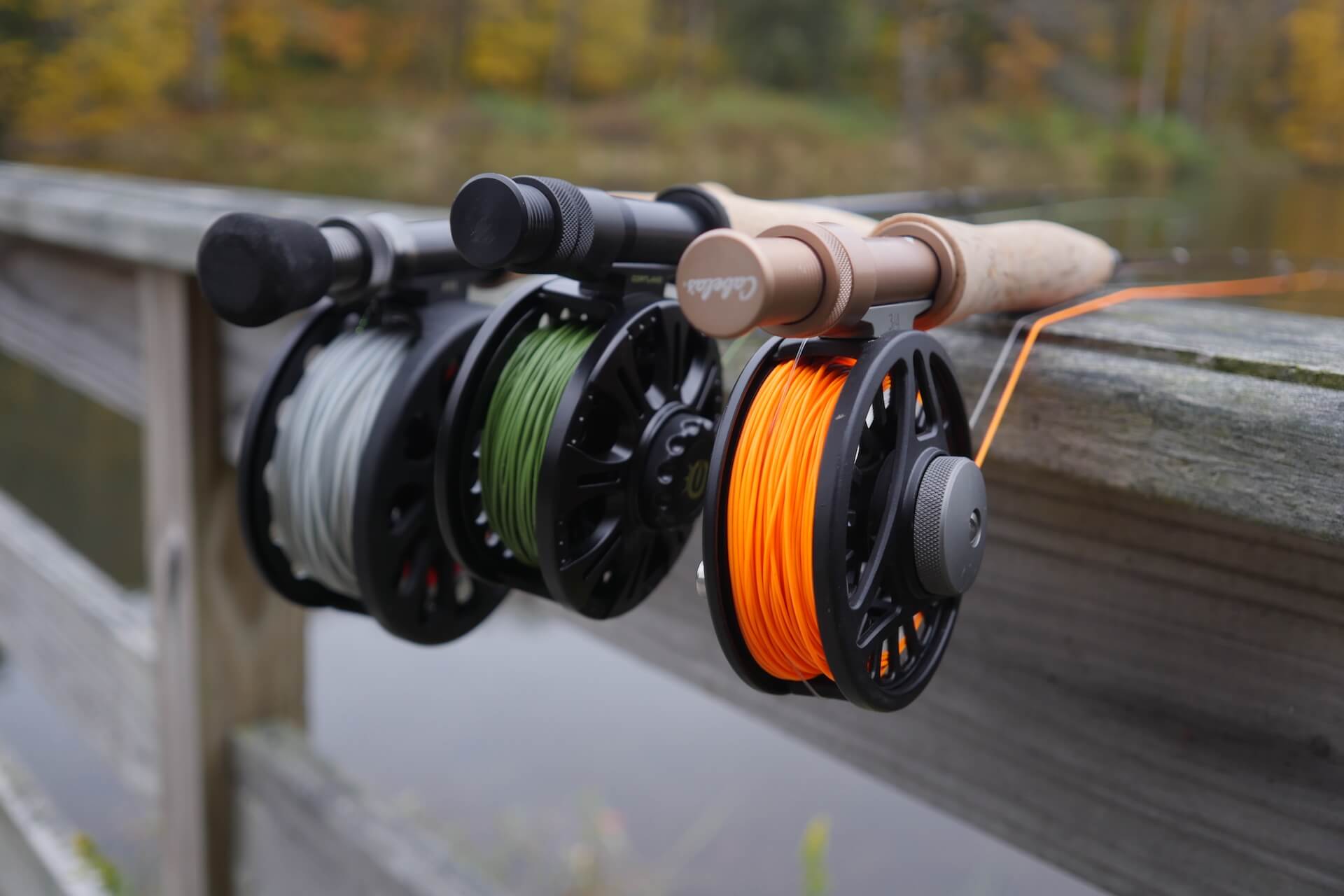
Fly Line
The fly line is critical as it delivers the fly to the target and is matched to the weight of your rod and reel. As with other pieces of fly fishing gear, you can get really nitty gritty with fly lines. To keep it simple in the beginning I recommend considering a WF (weight forward) line that floats.
Weight-forward line: This type of line is easier to cast because it has more weight at the leading end.
Floating line: Most beginners should start with a floating line because it covers a wide range of fishing conditions and is easier to manage.
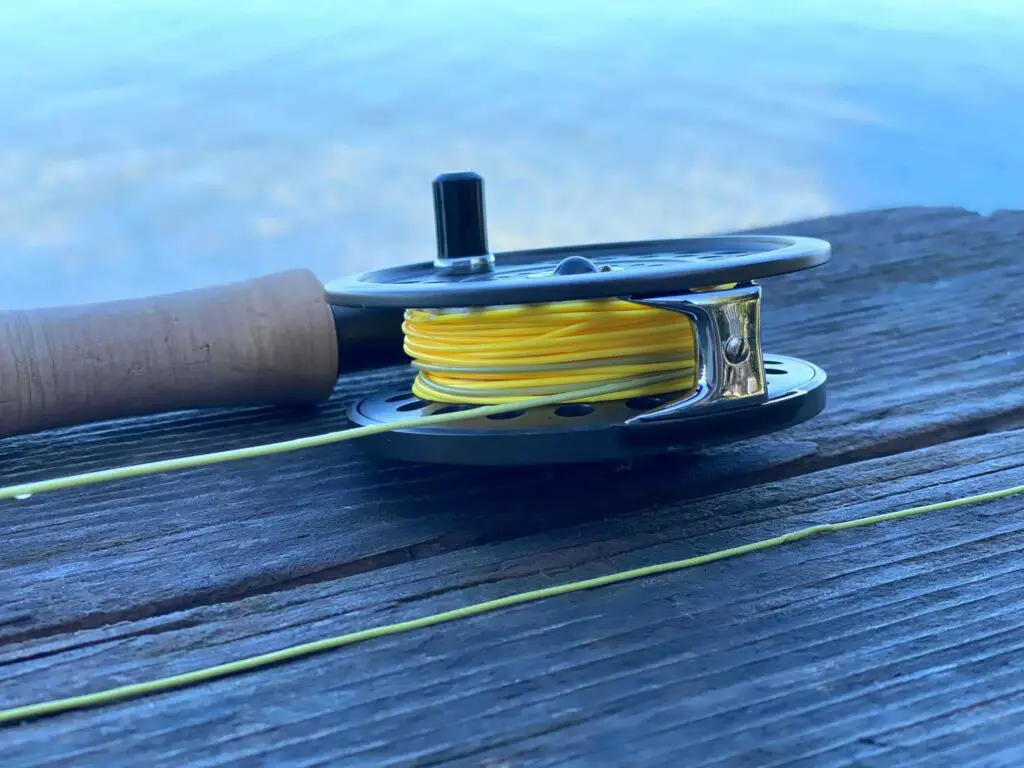
Leader and Tippet
The leader is the clear material connected to the end of your fly line, ending in the tippet, which is tied to the fly. Beginners should start with a 9-foot tapered leader, which helps in turning the fly over in the air. The tippet should be fine and strong, usually around 4 to 6 feet long, with a thickness that matches the delicacy of the fly used.
Flies
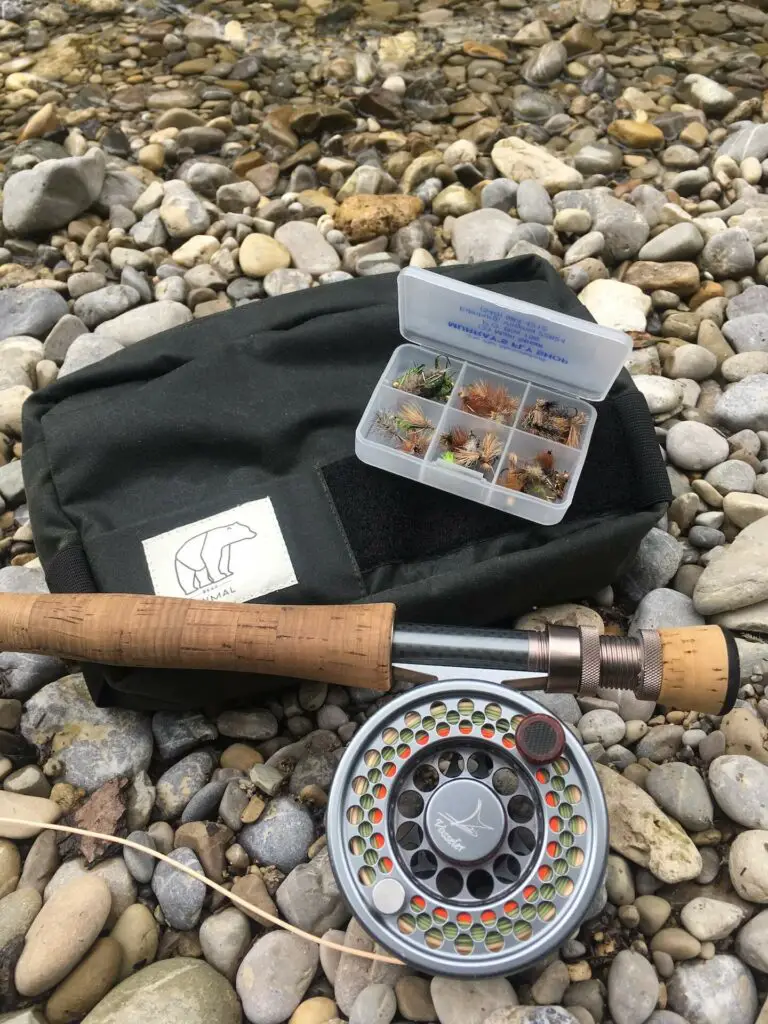
Flies are the lure used in fly fishing, and there are thousands of different patterns. As a beginner, focus on these basic types:
Dry flies: These float on the water surface and are used to imitate adult insects.
Wet flies and nymphs: These sink below the surface, mimicking larvae or small fish.
Streamers: Larger flies that simulate small fish or large aquatic prey and are typically used in moving water.
Additional Essential Gear
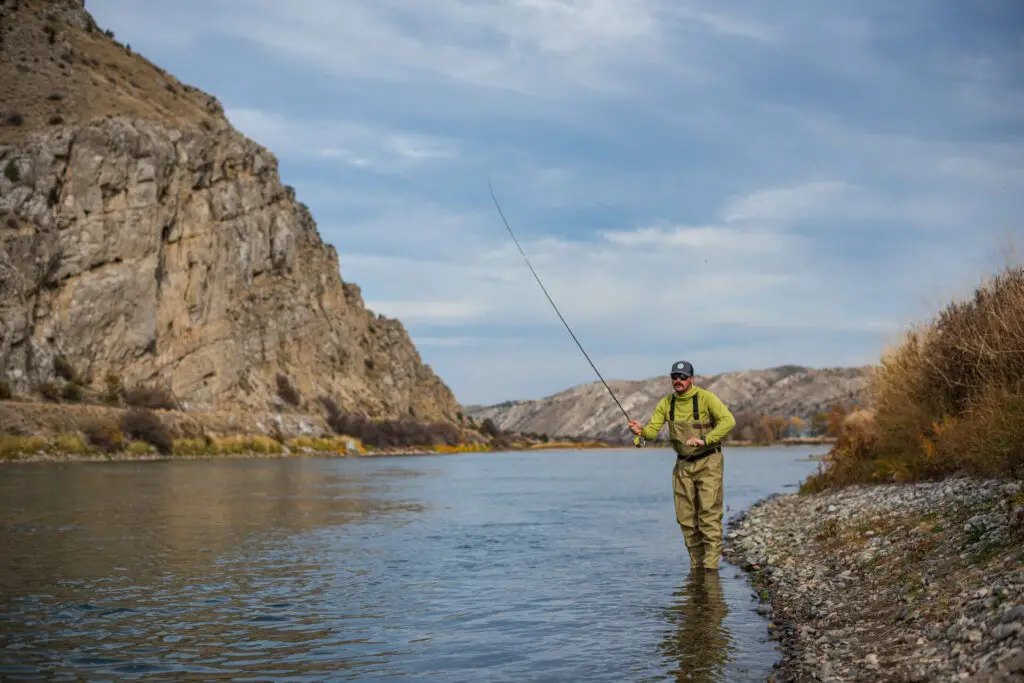
Waders and boots: For river fishing, waders keep you dry, and boots provide traction on slippery surfaces.
Wading Jacket: I cannot state the important of a quality wading jacket enough. This is of particular importance if you’re fishing in cold and wet climates.
Fly fishing vest: A vest with multiple pockets is handy for carrying gear, such as extra flies, leaders, and snacks.
Hat and sunglasses: Protect yourself from the sun and improve visibility in the water.
Pliers: Pliers help you release the hook from a fish’s mouth (particularly important when practising catch and release fishing. If they feature integrated cutters you can also use them to cut a line or tippet.
Landing Net: Here again, a landing net is of particular importance when practicing catch and release fishing. It helps you to quickly net and release a fish. This comes in handy when fishing rivers with stronger currents where you wouldn’t be able to safely grab a fish. From my experience it’s best to go for a ghost net that doesn’t spook the fish when you net them and is also gentle on the fish’s skin.
Conclusion
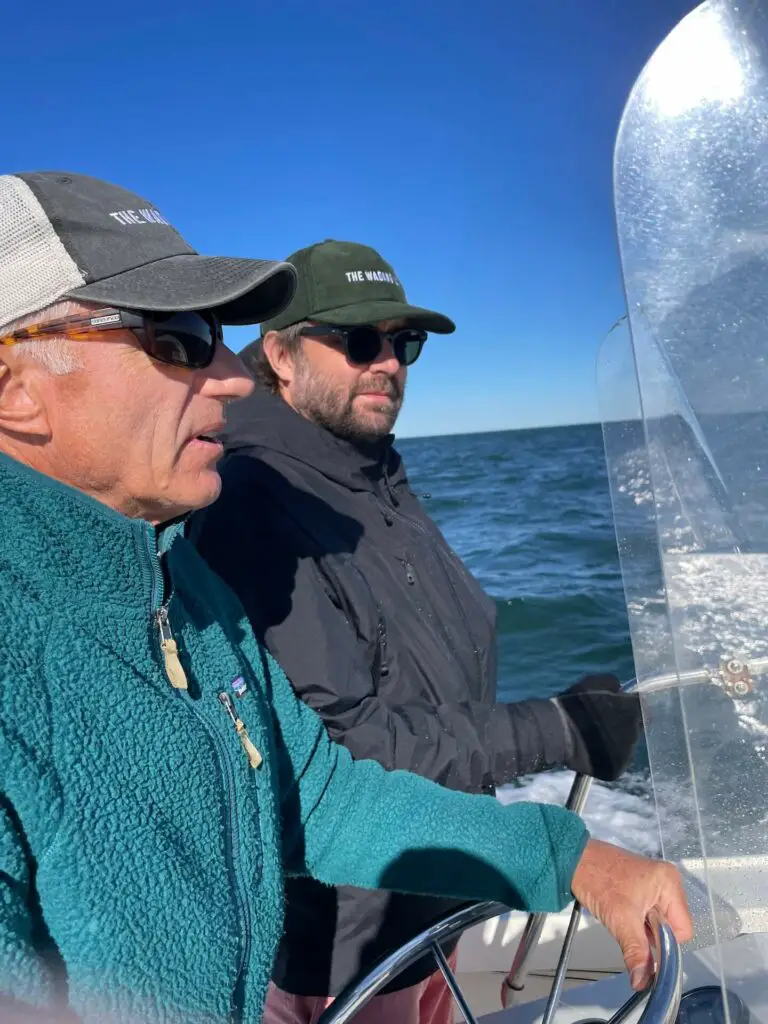
Equipping yourself with the right gear as a beginner will enhance your experience and increase your chances of success. Remember, the best way to learn is by doing, so don’t hesitate to ask for advice at your local tackle shop or join a fly fishing class. Happy fishing!
FAQs: Essential Fly Fishing Gear to Get Started
What is the best fly rod for a beginner?
A good starter rod is a medium-action rod around 8 to 9 feet long, and a weight of 4 to 6. This setup offers a balance between sensitivity and power, suitable for a variety of fishing conditions and especially good for learning basic casting techniques.
How much should I expect to spend on my initial fly fishing gear?
Beginners can expect to spend anywhere from $150 to $300 for a decent starter kit that includes a rod, reel, line, and a few basic flies. While there are cheaper options, investing in a slightly higher quality setup can significantly enhance your experience and last longer.
Can I use the same gear for different types of fish?
Yes, to an extent. A basic 4 to 6 weight rod and reel setup can handle a variety of fish sizes and types, particularly common freshwater species like trout and small bass. However, if you plan to target larger species or saltwater fish, you will need a heavier setup.
What type of fly should I use as a beginner?
Start with a few basic patterns like the Woolly Bugger (streamer), Elk Hair Caddis (dry fly), and Gold-Ribbed Hare’s Ear (nymph). These flies can effectively attract a range of fish and are forgiving to cast, making them great for beginners.
Do I need a guide or instructor to start fly fishing?
While not strictly necessary, a guide or instructor can significantly accelerate your learning curve. They can provide hands-on instruction, help you understand water reading, fly selection, and proper casting techniques. Many beginners find that lessons or guided trips provide a foundation of skills that improves their success and enjoyment of the sport.

